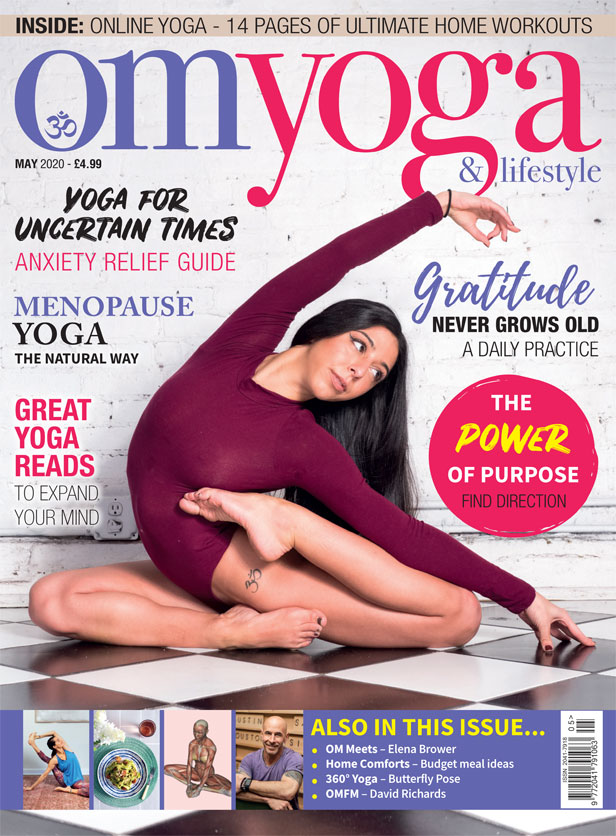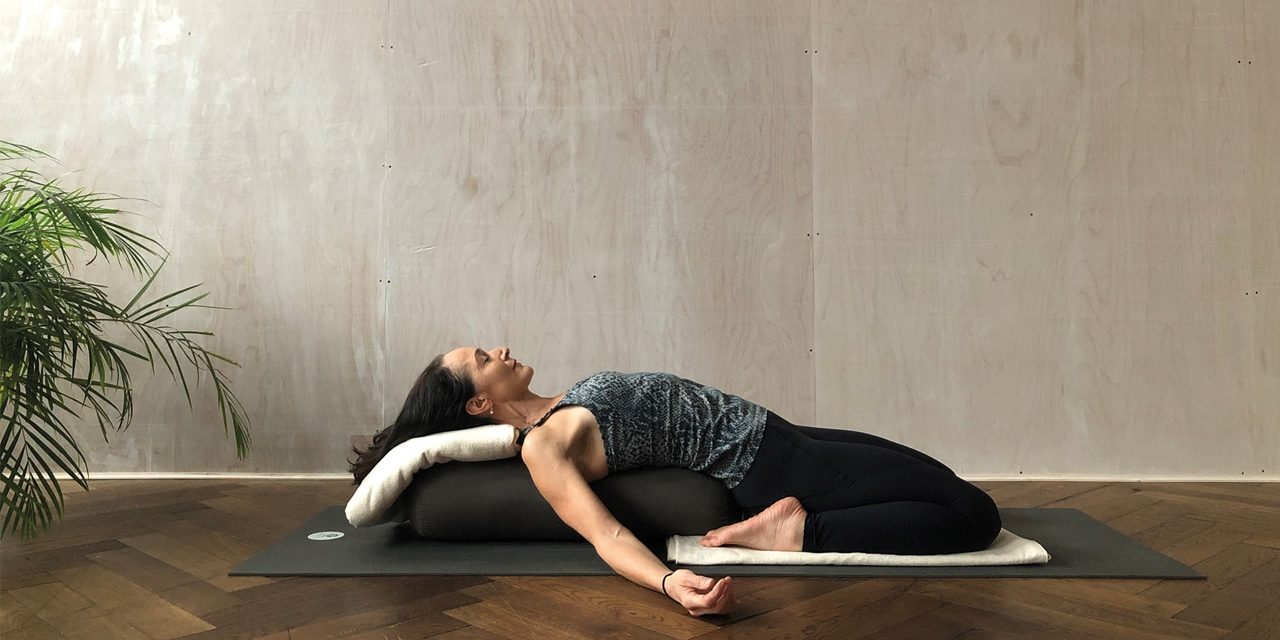
Menopause Yoga
Petra Coveney on how to make Menopause Yoga work for you
More than 13 million women in the UK are going through menopause and yet there was, until recently, little support to help them through this natural but destabilising stage of life.
Petra Coveney, who is a member of the British Menopause Society (BMS) for health practitioners, developed Menopause Yoga (menopause-yoga.com) to specifically meet the needs of women going through menopause. She works with menopause specialists Dr Louise Newson (in the Midlands) and Dr Shahzadhi Harper (in London) and has been running Menopause Yoga (MY) workshops since 2015.
Last year, due to demand from women and yoga teachers, she launched a teacher training (TT) course that is accredited by both the British Wheel of Yoga (as a weekend module) and Yoga Alliance Professionals (40-hour TT). It has proved so popular that the TT and workshops are now being delivered in studios, medical centres and retreats across the UK. And there will be a new MY online course this Spring. Here, Petra Coveney explains how yoga can support women to transition positively through menopause and embrace post menopause as their ‘Second Spring.’
“Menopause symptoms can range from the well-known hot flushes and night sweats, surges of anger and irritability, to weight gain, headaches and poor sleep. However, there are over 30 other symptoms that can affect the brain and cognitive function leading to memory loss and brain fog, anxiety and feeling overwhelmed, as well as food sensitivities, extreme muscles and joint pain, urinary tract infections, stress incontinence, pain during sexual intercourse and many more! In fact, the drop in the hormone oestrogen during and after menopause affects every part of the body and every aspect of a woman’s life, work and relationships.
While not all women will experience the same number or severity of symptoms, four out of five menopausal women surveyed in the UK said their symptoms negatively affected their lives. When you can’t sleep, think, focus on work, eat or drink what you used to, your joints and muscles ache, sexual intercourse is painful and your body is morphing into an unfamiliar shape, it’s no surprise that some women feel overwhelmed, lost and low.
Although the newer versions of Body Identical Hormone Replacement Therapy (HRT) derived from wild yams are considered lower risk than the older synthetic versions, and they can even help to prevent osteoporosis (brittle bones) and cardio vascular disease (which increases after 50), GPs are still wary of prescribing it to women with a family history of breast cancer, and women who take HRT say it doesn’t prevent all of their menopause symptoms. This includes Dr Louise Newson who also practices yoga to manage her own menopause symptoms, and some women are reluctant to take hormones preferring instead to take a ‘natural’ route that includes changes to their diet, vitamin supplements and type of exercise, lifestyle and work-life-balance. So how can yoga help?
After years of research and observation of my own experience of an early menopause, I developed Menopause Yoga (MY) that combines traditional knowledge from the East with modern medical science from the West. Underpinning MY are Indian Yoga and its sister science Ayurveda, Traditional Chinese Medicine and Qi Gong, together with Cognitive Behaviour Therapy (CBT), mindfulness, and the latest medical advice from the BMS.”
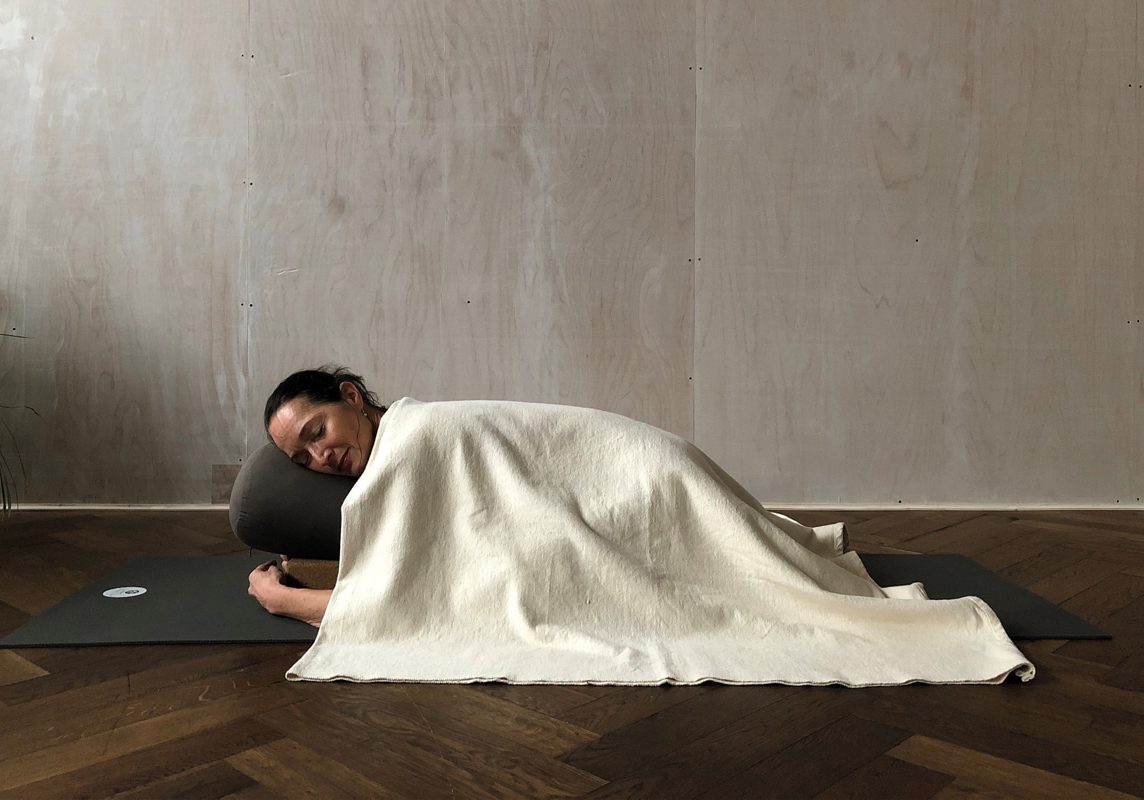
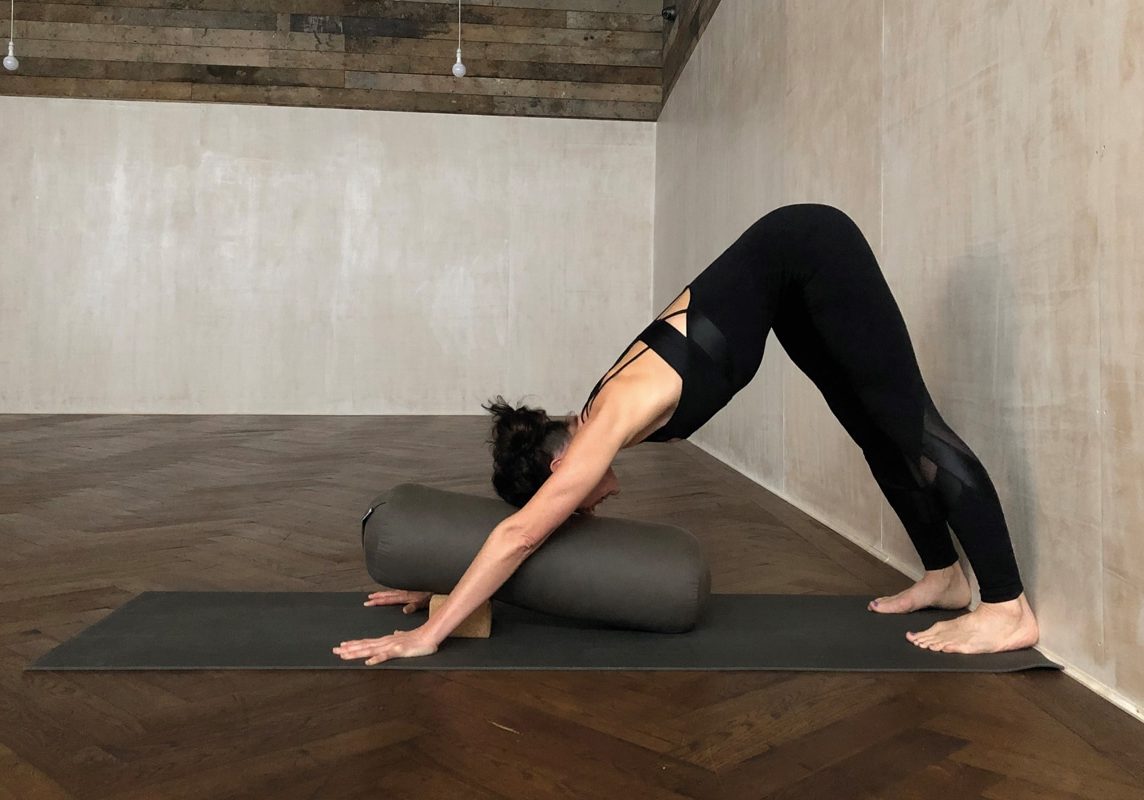
Stress Reduction
“All the symptoms of perimenopause (the transitional time before the menstrual cycle ends) are exacerbated by stress as this overloads the endocrine system that is already imbalanced by the peaks and troughs of the hormone oestrogen. Stress triggers our fight or flight response, which is heightened by hormone surges. This, in turn, intensifies feelings of anxiety, some may experience panic attacks, a sense of feeling overwhelmed by simple tasks, more frequent and more severe hot flushes during the day and sweating and insomnia at night. Over time, these cause daytime fatigue and brain fog which are also attributed to the drop in oestrogen.
So, it stands to reason that practicing relaxing and restorative yoga, breathwork and meditation and mindfulness can help a woman manage her stress levels.
Research by the charity Women’s Health Concern has shown that a daily routine over several months that includes CBT exercises tailored to menopause, and ‘paced breathing’ (slow abdominal breath and Viloma three-part breathing), can significantly reduce hot flushes and anxiety.
Menopause Yoga incudes all of these tried and tested techniques. There are three main yoga asana, breathwork and meditation sequences to help women manage the three main groups of symptoms, which are linked to the Ayurvedic doshas: Pitta, Vata and Kapha.
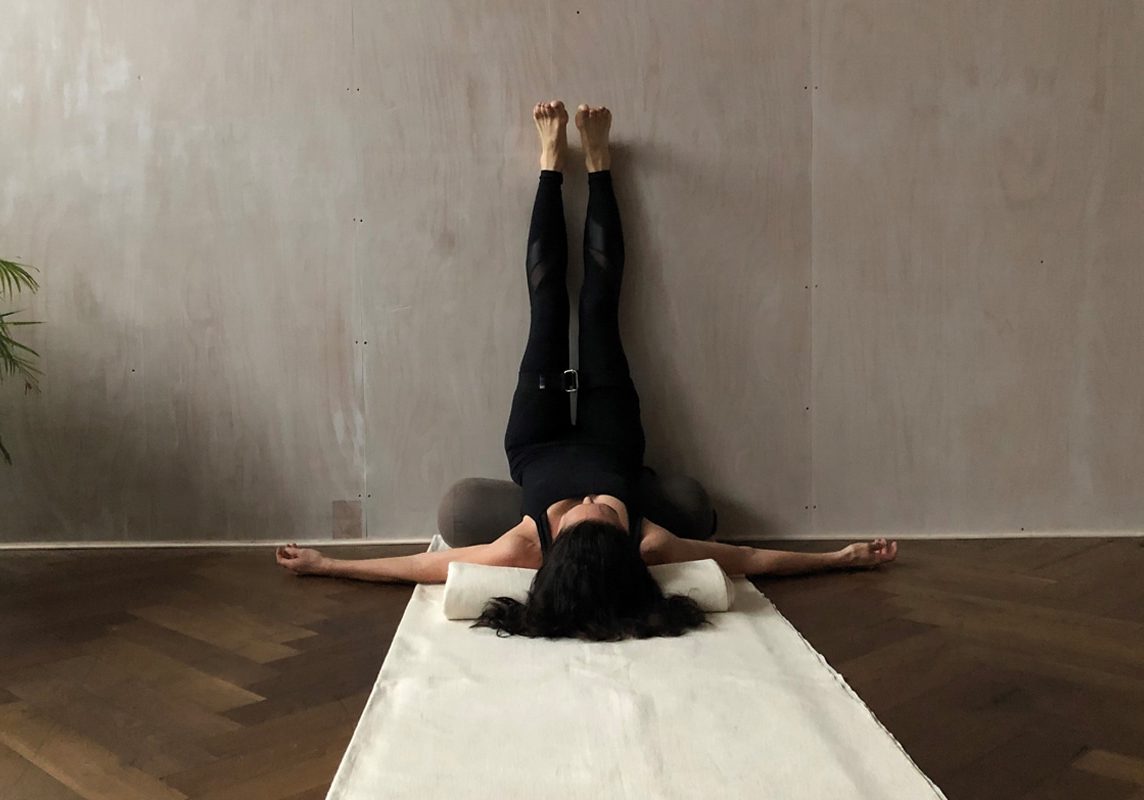
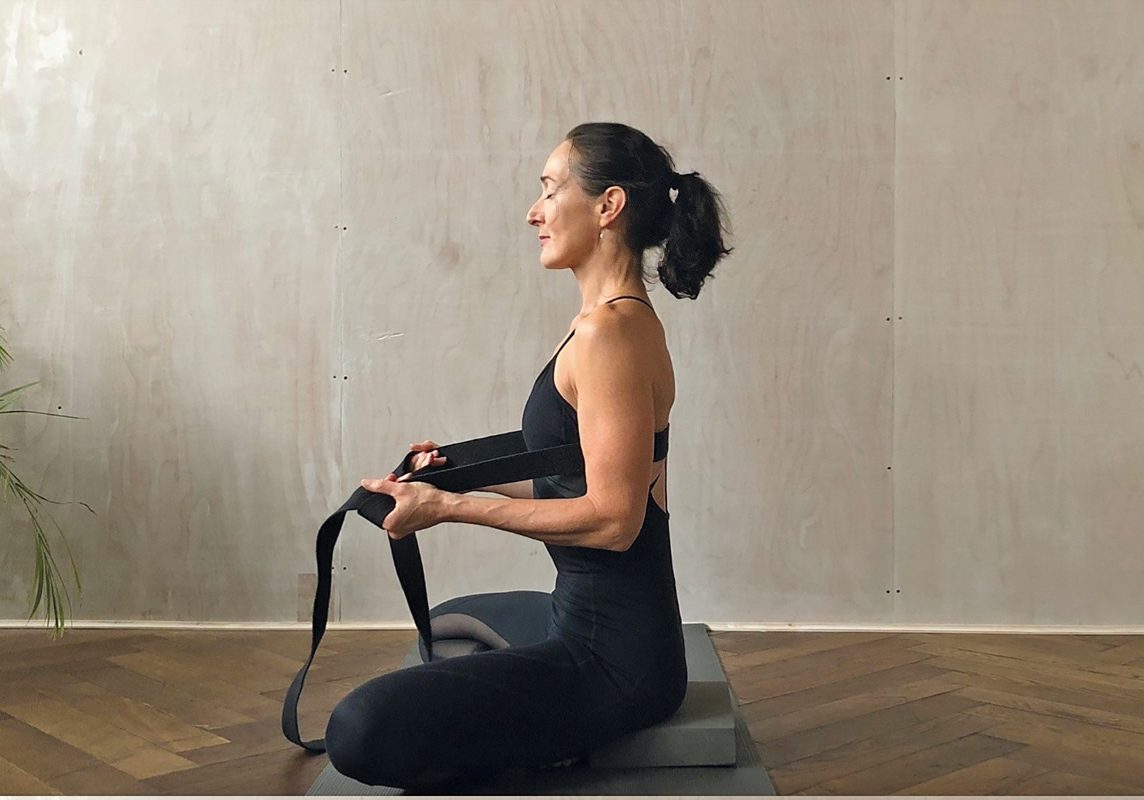
Here are some MY tips and yoga techniques from the Vata sequence for stress reduction:
- Chandra Namaskar: a Moon Flow sequence to calm the mind. The MY sequence is slow, simple and fluid, like a gentle moving meditation.
- Supta Adho Mukha Svanasana: Supported Downward Facing Dog (pictured). Placing the crown of the head on a soft but supportive surface helps to calm the mind and the nervous system. Resting the head on a bolster also takes the weight off your shoulders and wrists so that you can stay longer in the pose. Note: This is contraindicated for women with cervical spine and neck injury.
- Viparita Karani: legs resting up the wall (pictured). Place a cushion, blanket or bolster underneath the hips and a yoga strap around the mid thighs to contain the legs. Rest an eye bag on the forehead or eyes, a blanket underneath the head and try tucking in a blanket around the head and ears to close off the stressful overstimulation of the outside world.
- Supta Balasana: Supported Child’s Pose (pictured). Hugging a bolster can feel comforting and take us emotionally back to a place where we feel safe and secure. In Menopause Yoga we also offer women the option to ‘Disappear from the World’ by placing a blanket over their heads.
Note: always ask permission before making this adjustment as it can cause claustrophobia. - Mind Meets the Breath: Brick on Head meditation (pictured). Place a cork yoga brick (wood is too slippery, and foam is too light). Slow the breath down and count how many rounds of breath you take within 2-3 minutes. Slowly remove brick and sit in silence. This is an instant way to calm and focus the mind and enables you to sit in meditation for longer.
For more information about Menopause Yoga workshops, classes and teacher training courses visit: Menopause-Yoga.com or follow Petra Coveney on Facebook and Instagram @Menopause_Yoga
Dr Newson’s book, the Haynes Menopause Manual, is available from haynes.com or from Amazon


